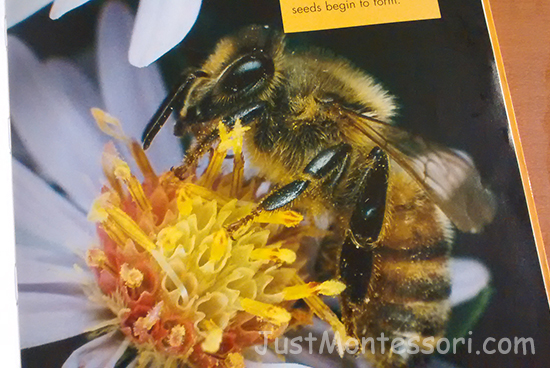We have started talking about the invertebrate group of insects. Bees are another kind of insect. There are about 20,000 species of bees. Some of the ones we may be familiar with are honey bees, bumble bees, and sweat bees. Bees are found all continents except for Antarctica. Bees have two antenna and two pairs of wings. Bees live in colonies and may have up to 40,000 bees in them!
Continue reading “Bees”Author: Lisa Good
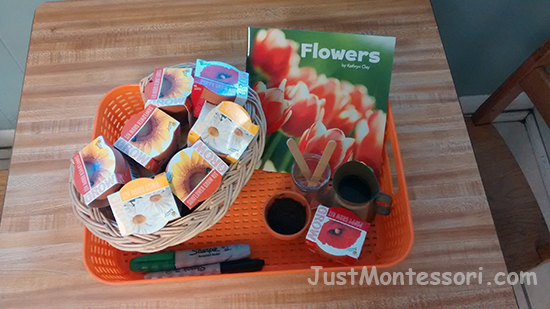
Parts of a Flower
We started to look at flowers last week.
The children can choose to make a Parts of the Flower booklet. There are a variety of flower work choices on the Botany shelf, which I like to provide options. We also planted some of the sunflower seeds that the children harvested from the sunflower head in the fall. Our discussion centered around Botany 26 Lesson on our lap card. This is found in Week 27 Day 2.
Continue reading “Parts of a Flower”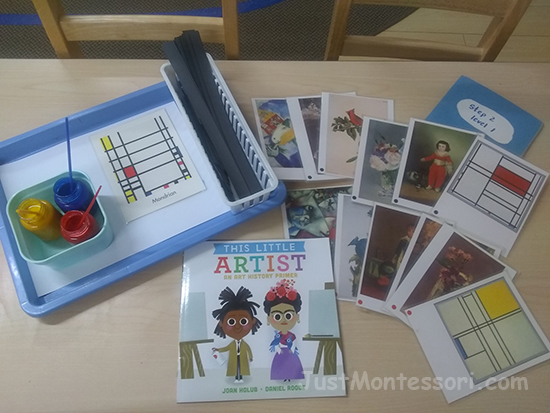
Mondrian Art and Sewing
We are going to talk a little about a kind of art called Abstract Art. We talked about different kinds of art before like Cubism and Impressionism. Well, what it Abstract Art mean? Abstract artist felt that paintings did not have to show things that were recognizable. Their paintings do not try to show animals, people, or places exactly how they really look. They like to use color and shape in their paintings to show images of emotions or moods. Some of the Abstract artists composed their paintings entirely of geometric shapes, such as circles, triangles, or squares.
Continue reading “Mondrian Art and Sewing”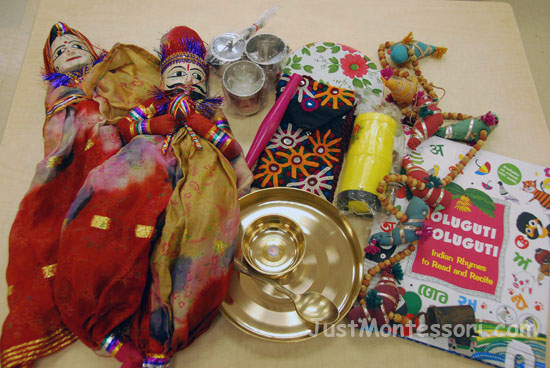
Asia/India
Let’s look at this map of Asia. We have talked about this country of China and this one, Japan. Today we want to talk about this country. It is called India. When we look at India we can see it has three sides surrounded by water. It is a peninsula. The world’s highest mountain range is in India. They are the Himalaya Mountains. India has some desert land, forest, and jungle area as well.
The cow is a very sacred animal in India. They can be found wandering through city streets. India is also home to many other animals like elephants, lions, pythons, river dolphins, and the snow leopard. The Bengal Tiger is the national animal of India. This beautiful cat lives in the forests and grasslands. They also swim and can be found in ponds, lakes, and rivers.
Indian clothing is very colorful…
Continue reading “Asia/India”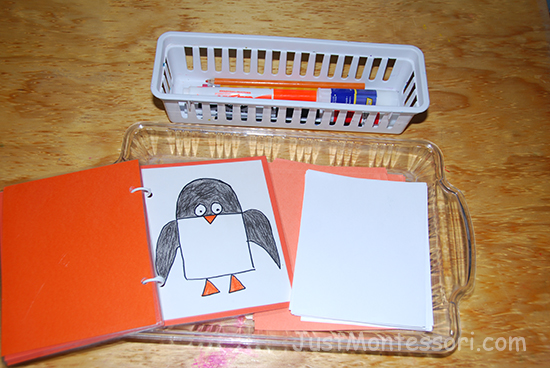
Antarctica Review
We read more on the continent of Antarctica and consider Circle Time Lesson Geography 31.
Let’s find Antarctica on our Continent Globe. What is it like on this continent? Do people live there in houses like we live in? What kind of animals are on this continent?
Penguins are one of the animals that live on Antarctica…
Continue reading “Antarctica Review”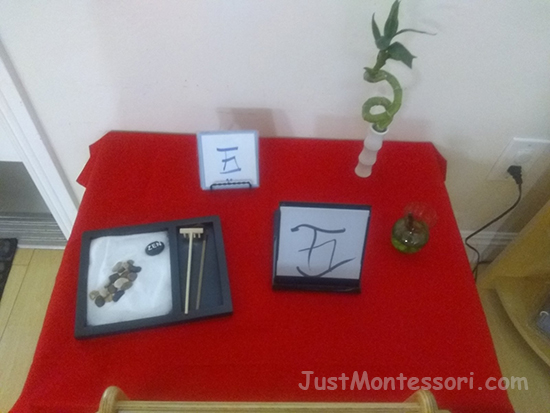
Asia
We continue to talk about Asia. In Geography 36 lesson we have started to talk about the continent of Asia. Now we want to look at the map and find the country of Japan. Japan is actually an archipelago or string of islands on the east side of Asia. The four main islands are Hokkaido, Honshu, Kyushu, and Shikoku. The islands have mountains, hills, forest, and many volcanoes. The people of Japan are known for being hard workers. The children are taught to show respect to others, especially their parents.
Continue reading “Asia”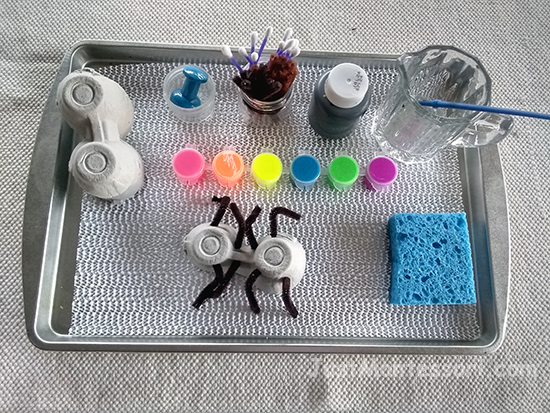
Invertebrate Groups
Last week we introduced invertebrate groups. Now we will focus on spiders!
Continue reading “Invertebrate Groups”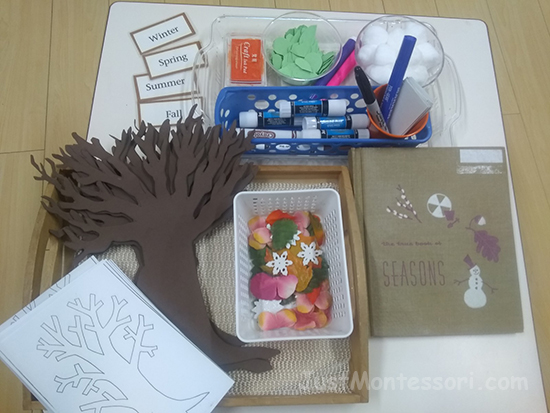
New Year and the Four Seasons
It is very quickly going to be time to get back to school and begin the new year. I like to take a calendar and tear off each month. During a lesson on the new year, I place all the months out on the floor and discus with the children how each block on the calendar represents one day (See picture below). We talk about how many days there are in the year and go over the names of the months.
Continue reading “New Year and the Four Seasons”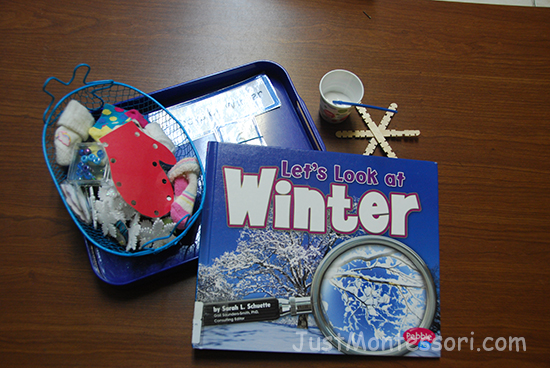
Winter Activities
Winter is soon to be here in the Northern hemisphere. Many schools do close for a winter break so some of these ideas can be presented for that last week before school closes, or have them ready to go when you return from break, highlighting the new season. Either way, it is important for us to prepare the materials in advance. I find most of my prep work is doen weeks in advance. That is the benefit of having the 40-week curriculum PDFs, so that you can see wha’s upcoming, the examples I provide, and how to accomplish everything needed. Here’s some ideas for the Winter…
Continue reading “Winter Activities”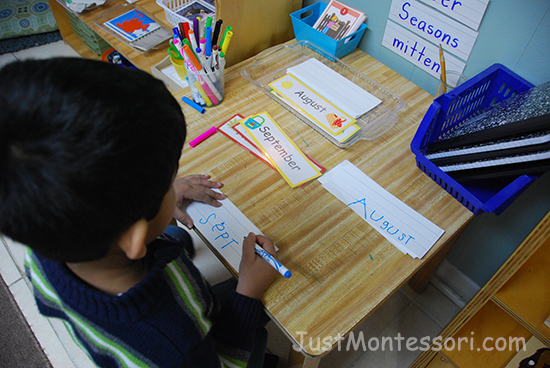
Children Working
Sometimes i like to go around the room and explore with the children what works on the shelf they chose. Of course, not everyone can do the lesson work from Circle Time, so it is important to have the shelves filled with works that reinforce those areas of the classroom like Geography, Botany, Math, Language, Practical Life, etc. It is amazing how, in the Montessori environment, the children are given these opportunities and they are allowed to explore to their hearts content. Many from traditional schools don’t understand this methodology because they are not used to relinquishing their perceived control over the childs progress. However, for us, we see that this allows them to blossom within the controlled environment of works we provide. One student may have interest for only a half-hour, while another may take an entire day, and return to it the next day. The child is 100% engaged and retains the lessons learned. I love it!
Continue reading “Children Working”
